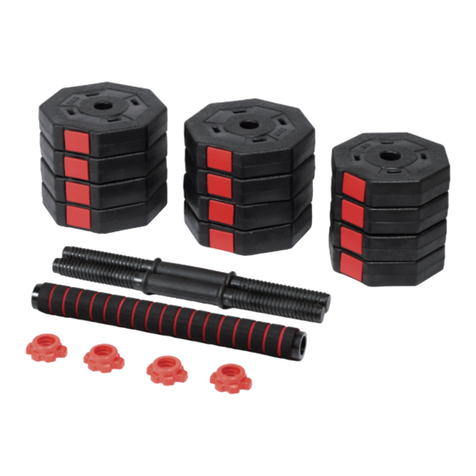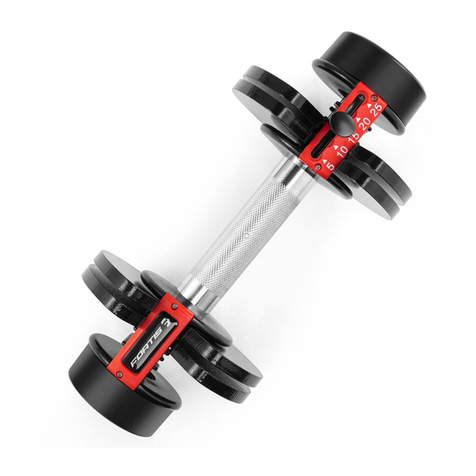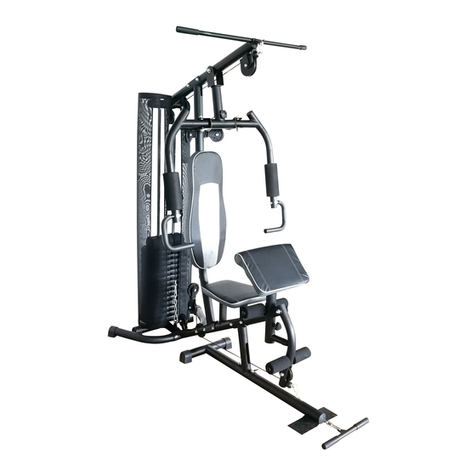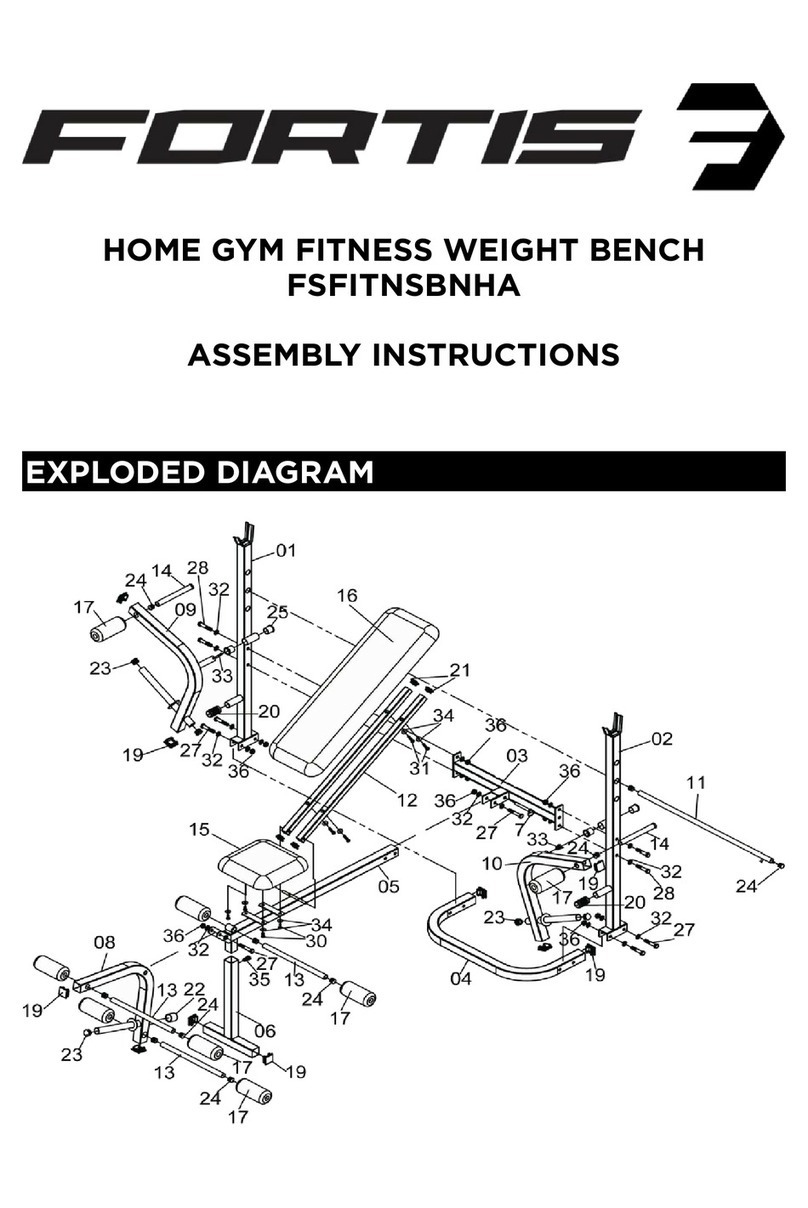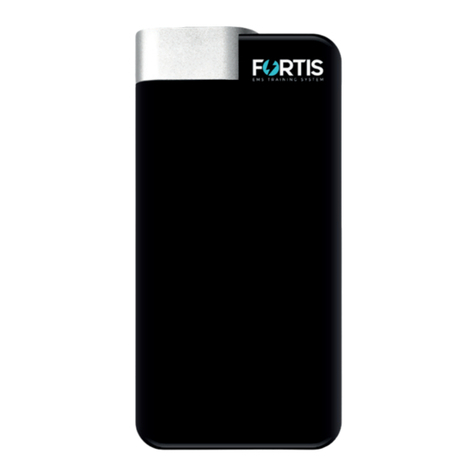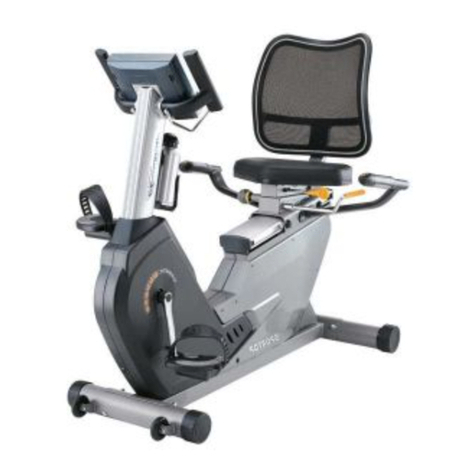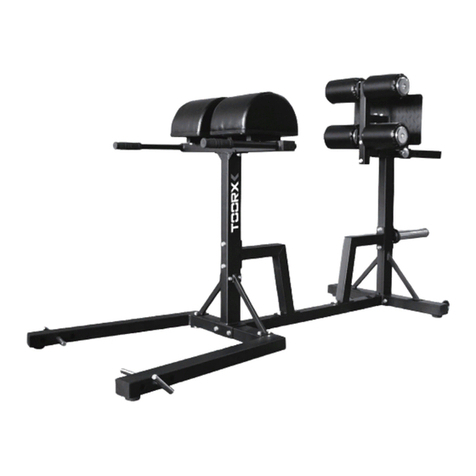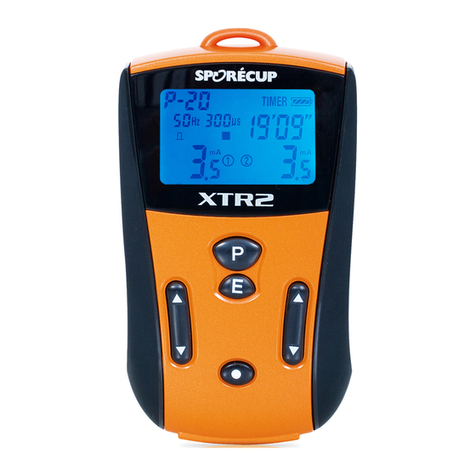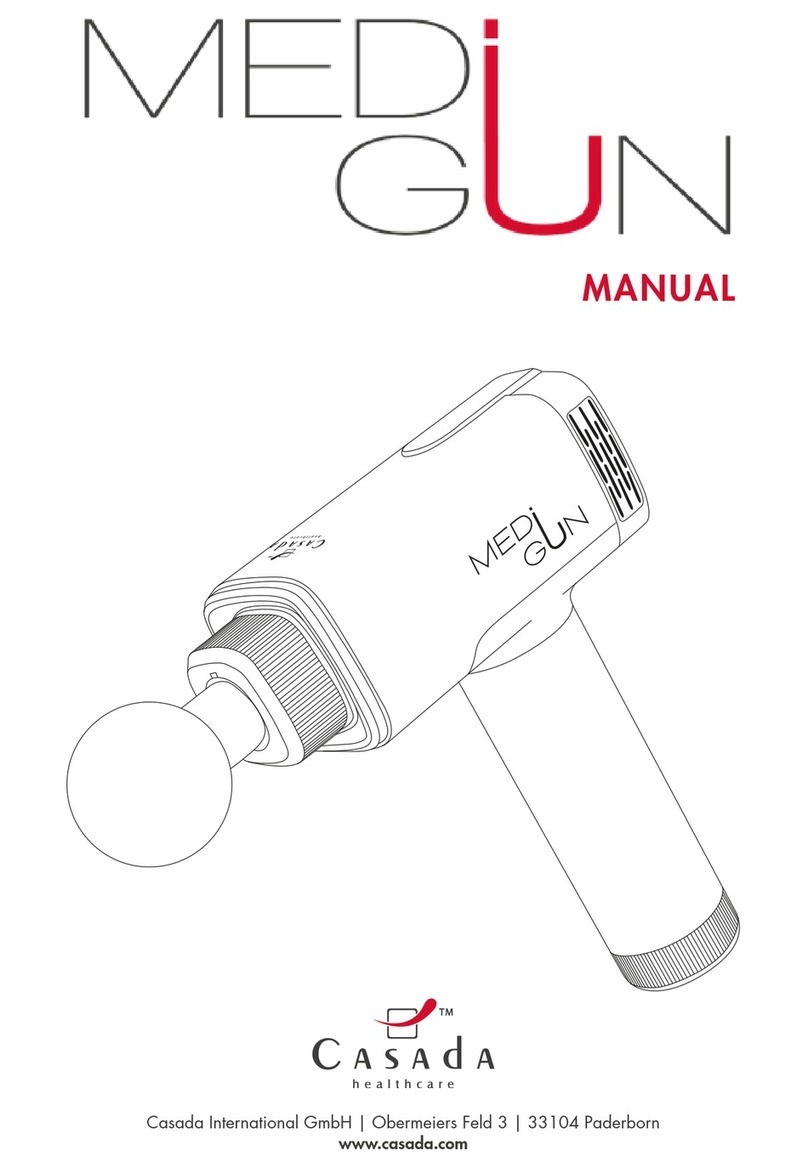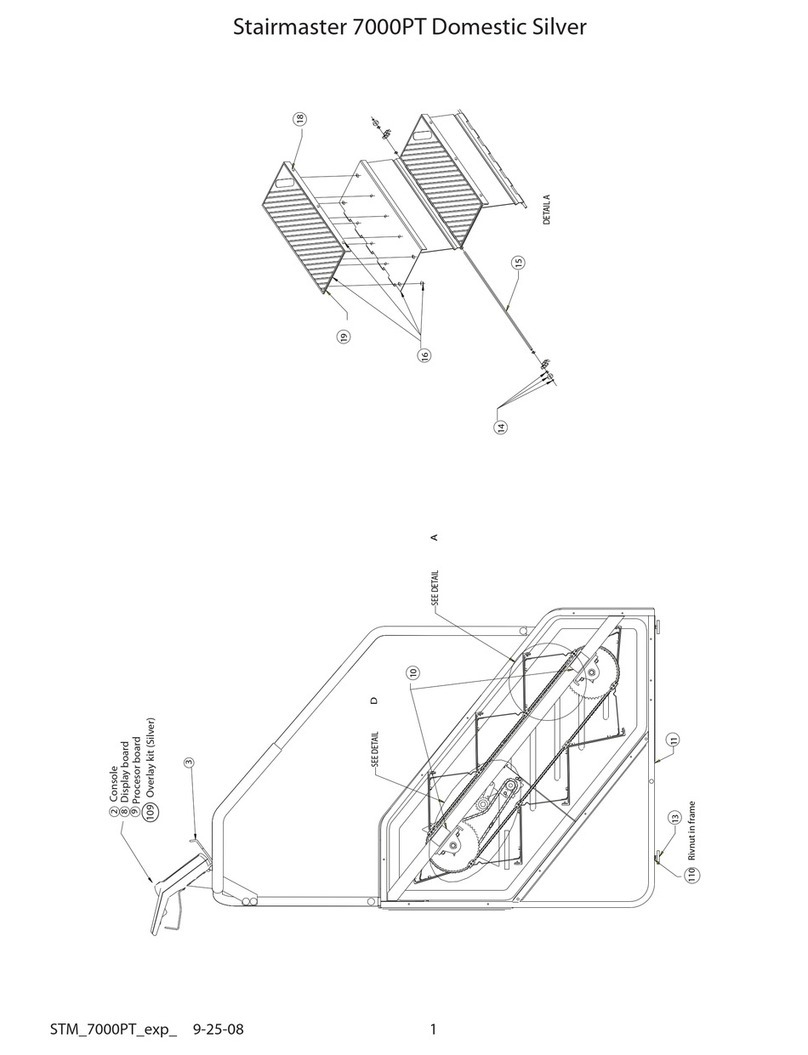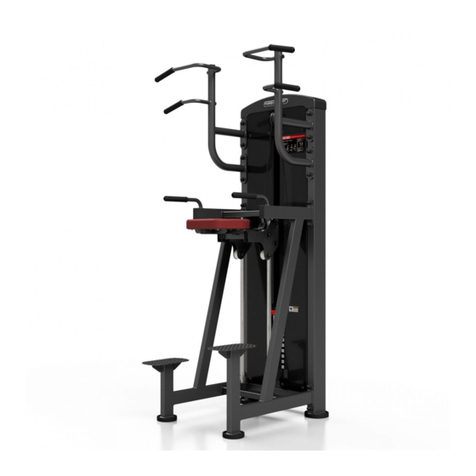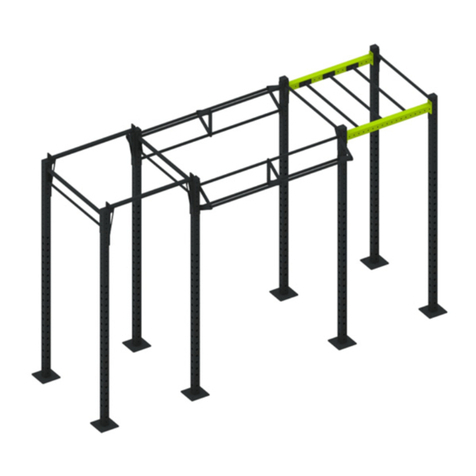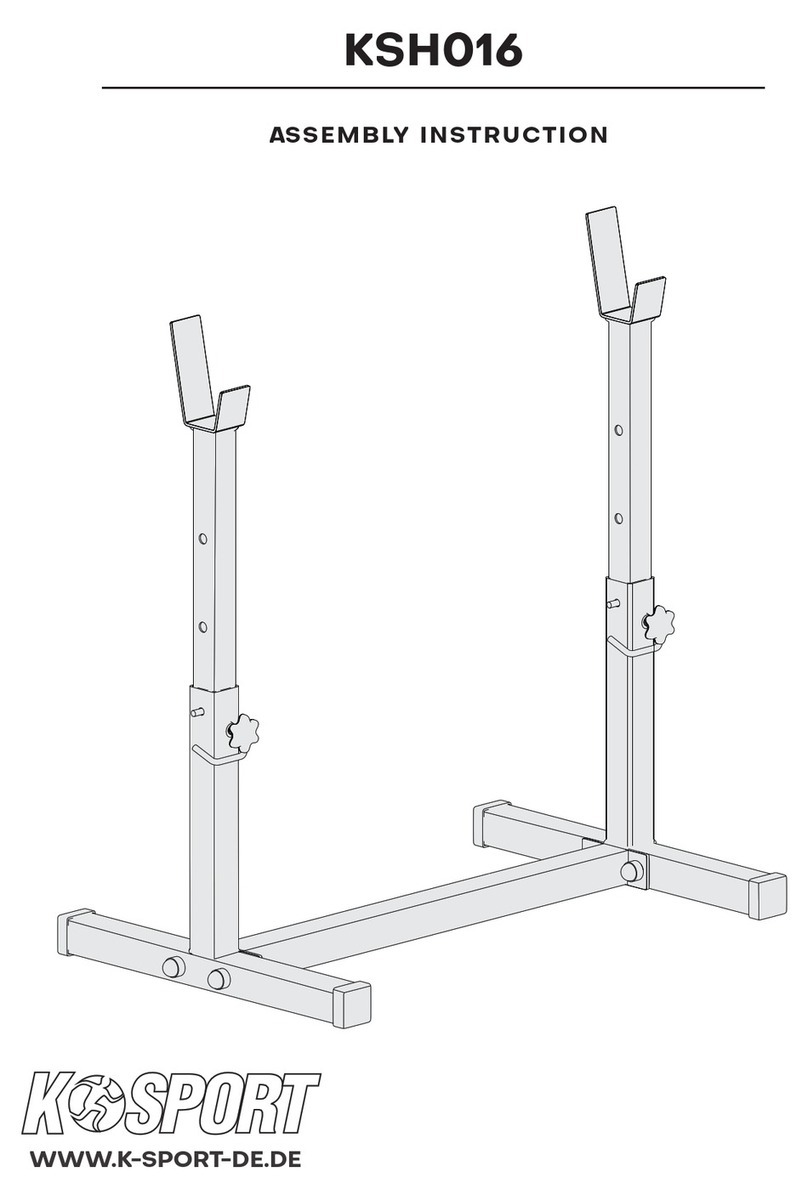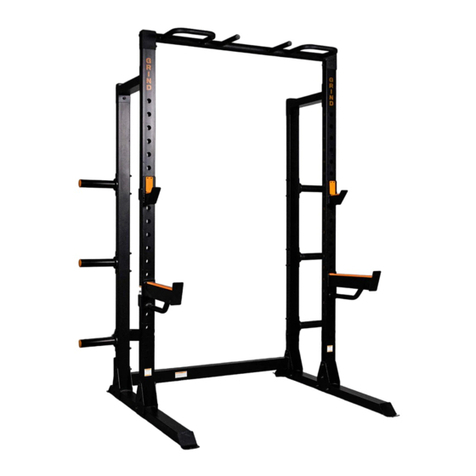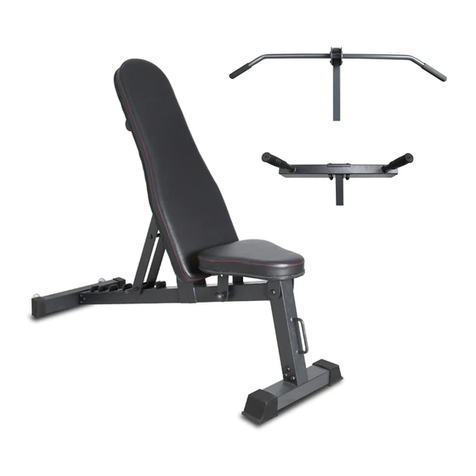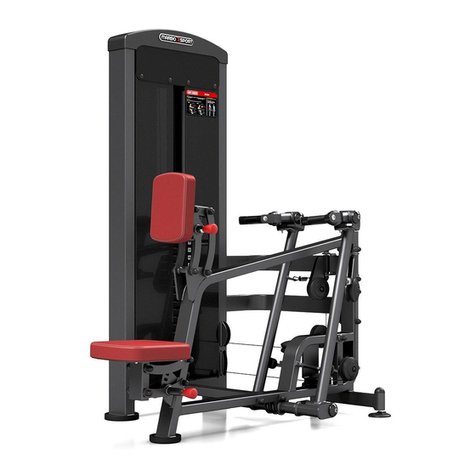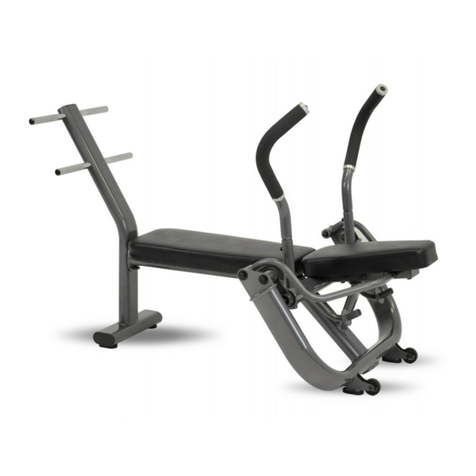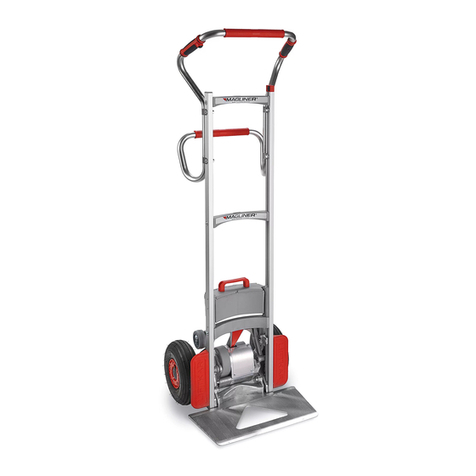Fortis FSPLTSPWRGM User manual

PILATES REFORMER GYM
MACHINE
FSPLTSPWRGM


1. Before starting this or any other exercise program, consult your physician. Your
physician should assist you in determining the target heart rate zone appropriate
for your age and physical condition. Certain exercise programs or types of
equipment may not be appropriate for all people. This is especially important for
people over the age of 35, pregnant women, or those with pre-existing health
problems or balance impairments. If you are taking medication which may affect
your heart rate, a physician’s advice is absolutely essential.
2. Start out slowly and progress sensibly. Even if you are an experienced exerciser,
start with the beginner workout and become familiar with all of the exercises before
moving on to more advanced workouts or exercises.
3. Do not overexert yourself with this or any other exercise program. Listen to your
body and respond to any reactions you may be having. You must learn to
distinguish “good” pain, like fatigue, from “bad” pain, which hurts. If you experience
any pain or tightness in your chest, an irregular heartbeat, dizziness, nausea, or
shortness of breath, stop exercising at once and consult your physician
immediately.
4. Warm up before any exercise program by doing 5 to 10 minutes of gentle aerobic
exercise, such as walking, followed by stretching.
5. Before each use, inspect the equipment and all parts, including cables, tension
cords, rollers, pulleys, handle assemblies and foot strap assemblies to ensure that
they are in proper working condition. Never use the equipment if it is not working
properly or if there are signs of wear such as frayed or worn cables, tension cords,
pulleys, rollers, handle or foot strap assemblies. Failure to follow these instructions
could result in serious injury or death.
6. USE CARE when getting on and off the equipment.
7. Use this equipment ONLY for the intended use as described in this manual. Do not
modify the equipment or use attachments not recommended by the manufacturer.
8. Have plenty of clearance space on all sides of your equipment. It is important to
keep children, pets, furniture and other objects out of the way when using your
equipment. You should have a minimum of 3 feet of clearance space on all sides of
your equipment.
9. Wear appropriate clothing when exercising. Workout clothing should be
comfortable and lightweight, and should allow freedom of movement. Pilates
workouts may be performed with bare feet; or you may wear flexible athletic shoes
if you find that more comfortable. It is not recommended that you exercise with
socks or stockings only on the feet. Wearing socks or stockings only may cause
slippage of the feet when using the Foot Rest Bar Assembly or Push Up Bar
Assembly.
10. THIS EQUIPMENT IS NOT FOR USE BY CHILDREN.
SAFETY & WARNINGS
WARNING: You and others can be seriously injured or killed if warnings on
the equipment, in this owner's manual and video are not followed.

To prevent injuries, keep this and all fitness equipment out of the reach of children.
Follow these simple rules:
•Keep children out of rooms where you have your exercise equipment.
•Store exercise equipment in a room that can be locked.
•Know exactly where your children are when you workout.
•If you have small children at home, don’t wear headphones while you
work out.
•Talk to your kids about the dangers of exercise equipment.
11. Breathe naturally, never holding your breath during an exercise. Avoid over training,
you should be able to carry on a conversation while exercising.
12. Cool down after an exercise session, with 5 to 10 minutes of gentle exercise, such as
walking, followed by stretching.
13. Handicapped or disabled people must have medical approval before using this
equipment and should be under close supervision when using any exercise
equipment.
14. Only one person at a time should use this equipment.
15. DO NOT put hands, feet, or any foreign objects on or near this equipment when in
use by others. Use caution not to pinch fingers or hands in moving parts when
folding, setting up, or using the equipment.
16. To prevent the Fortis Pilates Reformer Gym Machine from tipping and causing an
injury, set up and use the equipment on a solid, level surface and follow the
exercise instructions described in the included Training Guide. Failure to follow
these instructions could result in serious injury or death.

1. Pulley Arm
Assembly
2. Handle Assembly
3. Glideboard
Assembly
4. Footrest Bar
Assembly
5. Small Hitch Pin
6. Push Up Bar w/
Grips & Hitch Pins
7. Knob
8. Tension Cord
(1, 2, 3, 4)
9. Height Adjustment
Bar
10. Base Frame
Assembly
11. Transport Handle
12. Large Hitch Pin
13. Headrest Base
14. Headrest
15. Foot Strap
Assembly
PRODUCT OVERVIEW

Height Adjustment
Bar
Push Up Bar w/Grips & Hitch Pins
Foot Rest Bar
Assembly
Base Frame Assembly
Glideboard Assembly
COMPONENTS LIST

Occasionally our products contain components that are pre-lubricated at the factory. We
recommend that you protect flooring, or anything else the parts may contact, with
newspaper or cloth.
NOTE:All location references, such as front, rear, left or right, made in these instructions are
from the user standing behind the Headrest and facing the Foot Rest Bar Assembly.
Fig. 1a
1a. Remove the knobs from compartment in styrofoam packaging. Lift the Foot Rest Bar
Assembly to the upright position, as shown in Fig 1a, and secure it with the knobs. Make sure
they are fully inserted and tightened. See ahead for “Foot Rest Bar Settings”.
GETTING STARTED
FRONT
Knob
Knob
Foot Rest Bar
Assembly
REAR

Fig. 1b
1b. Remove the pins from the pulley arm assemblies. Lift the pulley arm assembly to an
upright position as shown in Fig 1b. Replace the large hitch pins. Make sure large hitch pins
are fully inserted and stay in place.
Fig. 1c
1c. Attaching Push Up Bar Assembly:Place the Push Up Bar Assembly onto the Foot Rest
Bar Assembly and secure with the Small Hitch Pins that are attached to the Push Up Bar
Assembly. Make sure they are fully inserted and stay in place.
Large
Hitch
Pin
Pulley Arm
Assemblies
Large
Hitch
Pin
Push Up Bar
Assembly
Small
Hitch
Pin
Small
Hitch
Pin
Foot Rest
Bar
Assembly

Glideboard Adjustments
The Glideboard allows you to vary the intensity of your workout by using 3 different height
adjustments to move the Glideboard from a flat position to more challenging inclines. There
are a total of 16 different Tension Cord positions that will allow you to customize the
resistance on your Fortis Pilates Reformer Gym Machine to your exact fitness level.
The flat position is perfect for much of the Pilates Workout, as well as for beginners getting in
shape with the Strength Workout. The 2 incline positions allow you to progress the
resistance as you get more fit.
The flat position of the Glideboard will be referred to as Position A. To raise the Glideboard
from the flat Position A to either of the two incline positions, place one hand under the rear of
the Glideboard, under the Headrest Base, and slowly lift, (see Fig. A). The Height Adjustment
Assembly will slide into the Position B notch on the bottom of the Frame, or when lifted
higher, into the Position C notch on the bottom of the Frame, (see Fig. B). Make sure that the
Height Adjustment Assembly is securely settled in the notches on both sides of the Frame
before beginning to exercise.
Each time you raise or lower the Height Adjustment Bar, be sure you hold it to keep it
from dropping to the floor.
To lower the Glideboard to its (Flat) Position A, place one hand on the rear of the Glideboard
and the other hand on the Height Adjustment Assembly. Lift the Glideboard slightly to
release the Height Adjustment Assembly from the notches in the Base Frame Assembly, and
raise the Height Adjustment Assembly upward until the Height Adjustment Assembly slides
forward easily. Release the hand from the Height Adjustment Assembly and slowly lower the
Glideboard to the Flat Position.
ASSEMBLY INSTRUCTION
Rear of Glideboard
Height
Adjustment
Position
C
Position
B
Position
A (flat)

Tension Cord Adjustments
The Tension Cords allow you to vary the intensity of your workout by inserting or removing
any combination of the four Tension Cords. There are 16 possible Tension Cord tension
combinations that can be used to customize the resistance to your individual fitness level.
When used with the 3 Glideboard settings, you have 48 possible resistance settings. This
will allow you to start at and progress to your optimal fitness level with the Fortis Pilates
Reformer Gym Machine exerciser!
The Tension Cords are numbered to progressively increase resistance. Tension Cords #1 and
#2 are lower resistance cords, and are situated in the two outside positions.
Tension Cords #3 and #4 are heavier resistance cords, and are situated in the two middle
positions. (See FIG. C). With each exercise, Tension Cord settings will be suggested for both
beginner and more advanced exercises.
To a djust the Tension Cords, firmly grasp the Handle at the end of one Tension Cord.
Pull the Tension Cord away from the Glideboard and lift it slightly so that the Handle clears
the Base Frame Assembly. Lower the Handle into the corresponding notch on the Base
Frame Assembly. Make sure that the Handle is secure in the notch before releasing your
hand from the Handle. (See FIG. D). To release a Tension Cord from its notch, firmly grasp
the Handle and pull the Tension Cord away from the Base Frame Assembly until the Handle
is clear of the notch. Lift the Tension Cord slightly until it clears the Base Frame Assembly
and slowly bring the Handle toward the Glideboard. Place the end of the Handle back into
the hole in the Glideboard. Make sure that the end of the Handle is secure in the hole before
releasing your hand from the Handle.
When attaching Tension Cords, hold firmly until the Cords are properly positioned. DO NOT
LET GO of the Tension Cords until they are locked in or back in the start position.

Handle and Foot Strap Assembly Attachments
Either the Handles or the Foot Strap Assemblies can be attached to the Cables in the Pulley
Arm Assembly on either side of the Headrest, depending on the exercise.
Attach the Handles by clipping one to the end of each Cable, through the Clip at the end of
the Position Ball. Make sure that the Clip at the end of each Cable is closed before using the
Handles (See FIG. E). To release the Handles, open the Clip by pressing one side and slide
the Handle off of the Clip.
Attach the Foot Strap Assembly by clipping the Ring on the end of each Foot Strap
Assembly to the Clip at the end of each Cable. Make sure that the Clip at the end of each
Cable is closed before attaching the Foot Strap Assemblies to the feet (See FIG. F).
Attach one Foot Strap Assembly to each foot by wrapping the Foot Strap around the middle
of the foot, near the arch, and securing the hook and loop strap firmly (See FIG. G). Check to
make sure that the Foot Strap Assemblies are secure before beginning to exercise.

Headrest Adjustment
There are two positions for the Headrest, flat and raised. The Headrest is in the flat position
when unit is first received. To move Headrest to raised position stand at the rear of the unit,
lift the Headrest and push Headrest away from you letting the bracket slide into place. To
move the Headrest from a raised position, lift Headrest, pull it towards you then set down
the Headrest so it lies flat.
Headrest
(raised position)

Foot Rest Bar Settings
The Foot Rest Bar has 2 position settings:
Standard Upright Position:
This is a recommended position for users up to approximately 5’8” tall. Position the Foot
Rest Bar Assembly upright and fully insert Knob and tighten down the Headrest so it lies flat.
Tilted Position:
This position is recommended for users approximately 5’8” or taller. Position the Foot Rest
Bar Assembly away from the Glideboard and fully insert and tighten the Knob.
Insert Knob
here for
standard
Upright
Position
Insert
Knob
here for
Tilted
Position

Dimensions will differ based on your selected setup. The follow are approximate figures:
Length 1422 mm (56”)
Width 381 mm (15”)
Height Lowered 521 mm (20.5”)
Height Raised 711 mm (28”)
Product Weight Approx. 25 kg (56 lbs)
Maximum User Weight 136 kg (300 lbs)
SPECIFICATIONS

Your Fortis Pilates Reformer Gym Machine has been carefully designed to require minimum
maintenance. To ensure this, we recommend that you do the following:
Caring for Your Unit
Keep your unit clean. Wipe sweat, dust or other residue off the Frame, Glideboard, Foot Rest
and Handles with a soft, clean cloth after each use.
Maintenance
Before each use, inspect the equipment and all parts, including cables, tension cords, rollers,
pulleys, handle assemblies and foot strap assemblies to ensure that they are in proper
working condition. Never use the equipment if it is not working properly or if there are signs of
wear such as frayed or worn cables, tension cords, pulleys, rollers, handle or foot strap
assemblies. Contact help.kogan.com if in need of assistance.
CLEANING & CARE

Store your unit after use.
The Fortis Pilates Reformer Gym Machine measures 34.29 cm high and 38.1 cm wide when
the foot and headrests are lowered and is versatile to store when it is not in use. It can be
stored on its side, behind a couch, or placed underneath a table or bed that is over 35.56 cm
high.
To prepare the Fortis Pilates Reformer Gym Machine for storage, first pull the hitch pins (Fig.
1d) out of the shoulder rest and lower them, second, remove the knobs from the foot rest and
fold the foot rest bar over the glide board. Replace pins and knobs so that you don’t lose
them.
Fig. 1d
Your Fortis Pilates Reformer Gym Machine can now be rolled away for storage by lifting. To
move, use slow controlled movements. Lift the rear of the Base Frame Assembly by grasping
the Transport Handle and lifting until Rollers engage with the floor and roll to desired
location.
MOVING & STORAGE
Pulley Arm
Assemblies
Large
Hitch
Pin
Large
Hitch
Pin

The Fortis Pilates Reformer Gym
Machine unit may be stored on its side.
This unit is NOT SECURED and could
easily roll out from the wall which could
cause damage or injury. DO NOT store
unit in an up-right position.

Is the Fortis Pilates Reformer Gym Machine suitable for use if 6’3” (192cm) or taller?
There is an adjustment you can make to the foot bar which gives users an extra 5” of length
on the glide board. See under “Foot Rest Bar Settings” under the “Tilted Position” which is
recommended for users 5’8” or taller.
The pulley system has too much slack, or is not functioning properly.
Possible Cause 1: The long black cable has slipped out of the pulley groove and when user
straightens legs taking the glide board to the top, the cables will loosen and not be able to
fully retract.
To fix this problem: Check to see if the cable on the underside has fallen out of the pulley
groove (a correct cable track is shown in Picture A). If it has fallen out, place it back into the
plastic pulley bracket and groove - Picture B. Tighten the bolt if necessary. If the plastic
bracket that protects the pulley wheel is broken, the cable will slip out and hinder the
workout.
Picture A Picture B
Possible Cause 2: The roller support is broken or a roller is damaged, the glide board will not
function normally. If the roller support is compromised a replacement will be necessary;
contact Kogan customer support before further use.
TROUBLESHOOTING

IMPORTANT – Please review this section before you begin exercising.
Warnings:
If you are over 35 and have been inactive for several years, you should consult your physician,
who may or may not recommend a graded exercise test. Your physician can also assist you
in determining the Target Heart Rate Zone appropriate for your age and physical condition.
You should also consult your physician if you have the following/match any of the below
conditions:
•High blood pressure
•High cholesterol
•Asthma
•Heart trouble
•Family history of early stroke or
heart attack deaths
•Frequent dizzy spells
•Extreme breathlessness after
mild exertion
•Arthritis or other bone problems
•Severe muscular, ligament or
tendon problems
•Other known or suspected
disease
•If you experience any pain or
tightness in your chest, an
irregular heartbeat or shortness
of breath, stop exercising
immediately. Consult your
physician before continuing.
•Pregnant
•Balance impairment
•Taking medications that affect
heart rate.
Workout Phases
Every workout should consist of the following three phases:
Warm-Up
To prevent injury and maximize performance, we recommend that each workout period
should start with a warm-up. Your warm-up should gently prepare your muscles for the
coming exertion. Start by doing 5 to 10 minutes of gentle exercise, such as walking, that
gradually increases your heart rate and loosens up your muscles. Your warm-up exercise
should be aerobic in nature and only require an easy, unforced range of motion. This may be
followed by5to 10 minutes of stretching. Refer to the stretches found on pages 14 and 15 of
this manual. Never push yourself beyond a point of gentle tension on the muscles being
stretched. Keep your movements gentle, rhythmic and controlled.
Muscle Toning or Cardio Workout
Your warm-up should be followed by the Fortis Pilates Reformer Gym Machine workout or a
cardio workout, depending on your workout plan for that day. Regardless of which type of
workout you are doing, build up as your current fitness level allows and progress at a rate
that is comfortable to you.
For the first week or so, you may feel some muscle soreness. This is quite normal and should
disappear in a matter of days. If you experience major discomfort, you may be on a regimen
that is too advanced for you or you may have increased your program too rapidly.
EXERCISE GUIDELINES

Cool Down and Stretching
Every workout should be followed by a cool down. The cool down should consist of 5 to 10
minutes of easy exercise, followed by stretching. Refer to the stretches found on pages 14
and 15 of this manual. Never push yourself beyond a point of gentle tension on the muscle
being stretched. Keep your movements relaxed, rhythmic and controlled.
When to Exercise
The hour just before the evening meal is a popular time for exercise. The late afternoon
workout provides a welcome change of pace at the end of the work day and helps dissolve
the day’s worries and tensions.
Another popular time to work out is early morning, before the work day begins. Advocates of
the early start say it makes them more alert and energetic on the job.
Among the factors you should consider in developing your workout schedule are personal
preference, job and family responsibilities, availability of exercise facilities and weather. It’s
important to schedule your workouts for a time when there is little chance that you will have
to cancel or interrupt them because of other demands on your time.
You should not exercise strenuously during extremely hot, humid weather or within two hours
after eating. Heat and/or digestion both make heavy demands on the circulatory system,
and in combination with exercise can be an over-taxing double load.
Measuring Your Heart Rate
When checking Heart Rate during a workout, take your pulse within five seconds after
interrupting exercise because it starts to go down once you stop moving. Count pulse for 10
seconds and multiply by six to get the per-minute rate.
Target Heart Rate
Aerobic intensity guidelines for healthy adults are generally set at 60 to 85 percent of heart
rate. But, if you’re out of shape, remember that moderate to low level and consistent
cardiovascular training - well below the standard recommendations set forth - can result in
substantial and beneficial effects to your health and can greatly improve cardiovascular
endurance.
You can use the following calculation to determine what percentage of your heart rate you
are working at:
% heart rate = (220 - age) x %
Using this calculation, a 70% heart rate for a 40 year old would be (220 - 40) x 70% or 126.
Thus, this individual would need to reach 126 beats per minute to equal a 70% heart rate.
The above are guidelines; people with any medical limitations should discuss this formula
with their physician.
Clothing
All exercise clothing should be loose-fitting to permit freedom of movement, and should
make the wearer feel comfortable and self-assured.
Never wear rubberized or plastic clothing, garments like this can interfere with the
evaporation of perspiration and can cause body temperature to rise to dangerous levels.
The Pilates Workout may be performed with bare feet, or you may wear flexible athletic
shoes if you find that more comfortable. It is not recommended that you exercise with socks
or stockings only on the feet, wearing socks or stockings only may cause slippage of the feet
when using the Foot Rest Bar Assembly or the optional Push Up Bar Assembly.
Tips to Keep You Going
Table of contents
Other Fortis Fitness Equipment manuals
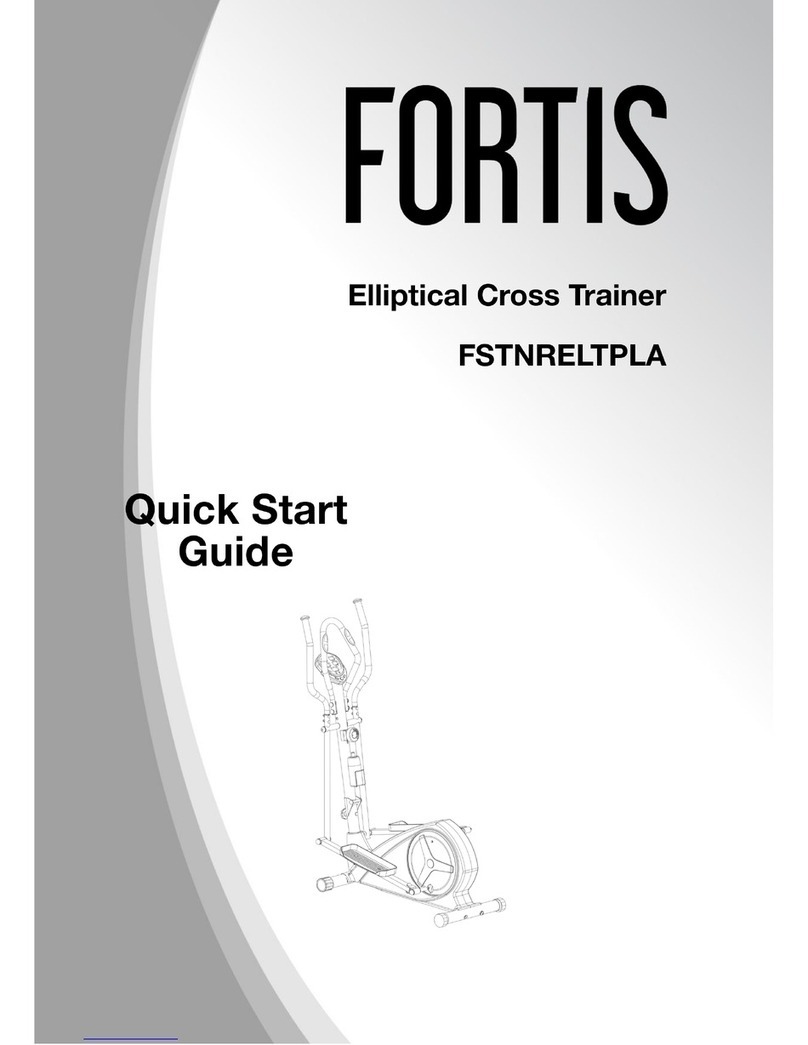
Fortis
Fortis FSTNRELTPLA User manual

Fortis
Fortis SK-600 User manual
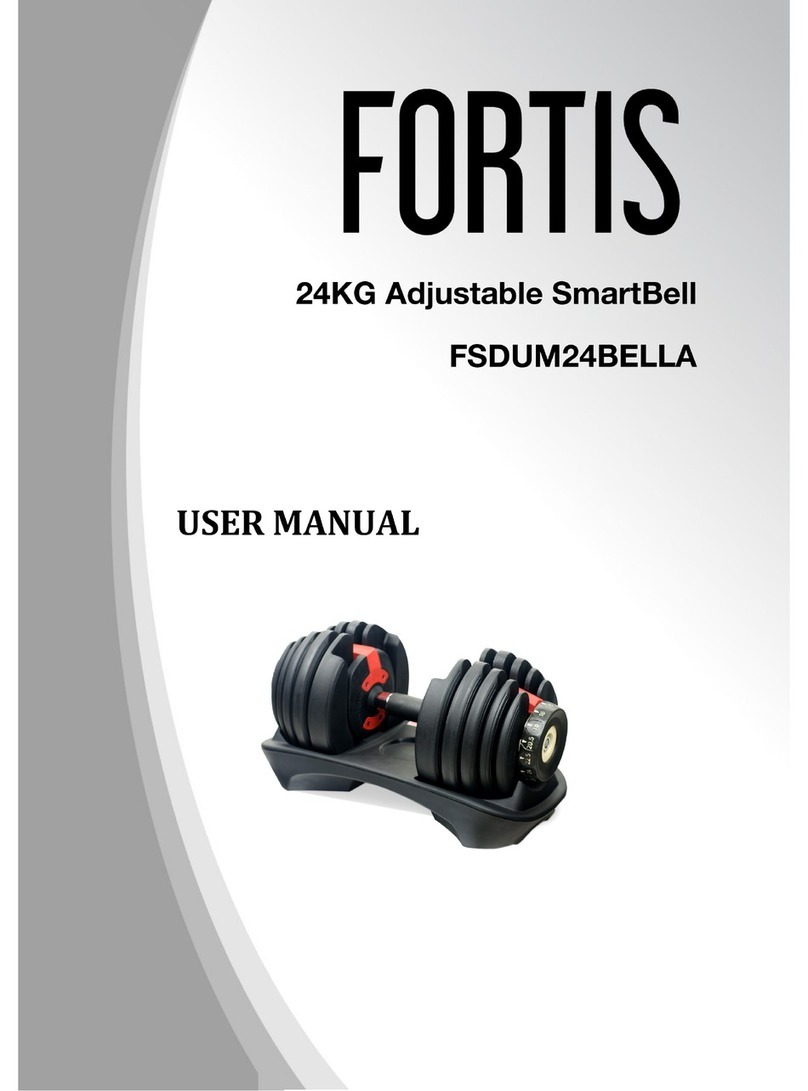
Fortis
Fortis FSDUM24BELLA User manual
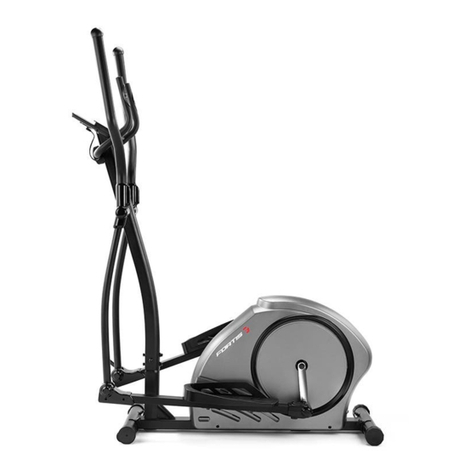
Fortis
Fortis FXT-360A User manual
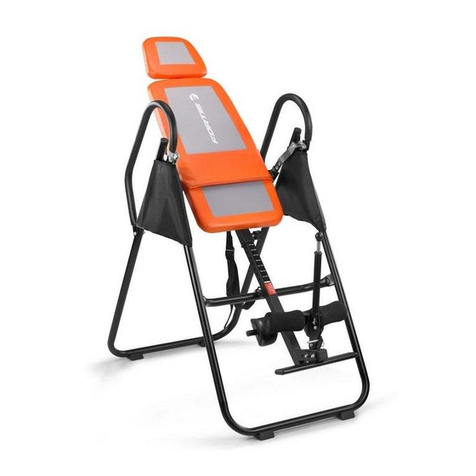
Fortis
Fortis FRINVSNTBLA User manual

Fortis
Fortis FRINVSNTBLA User manual
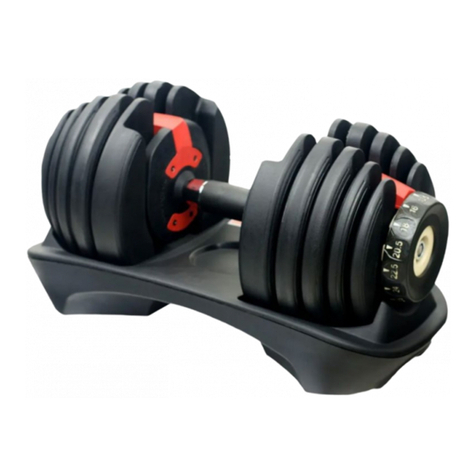
Fortis
Fortis FSDUM40BELA User manual
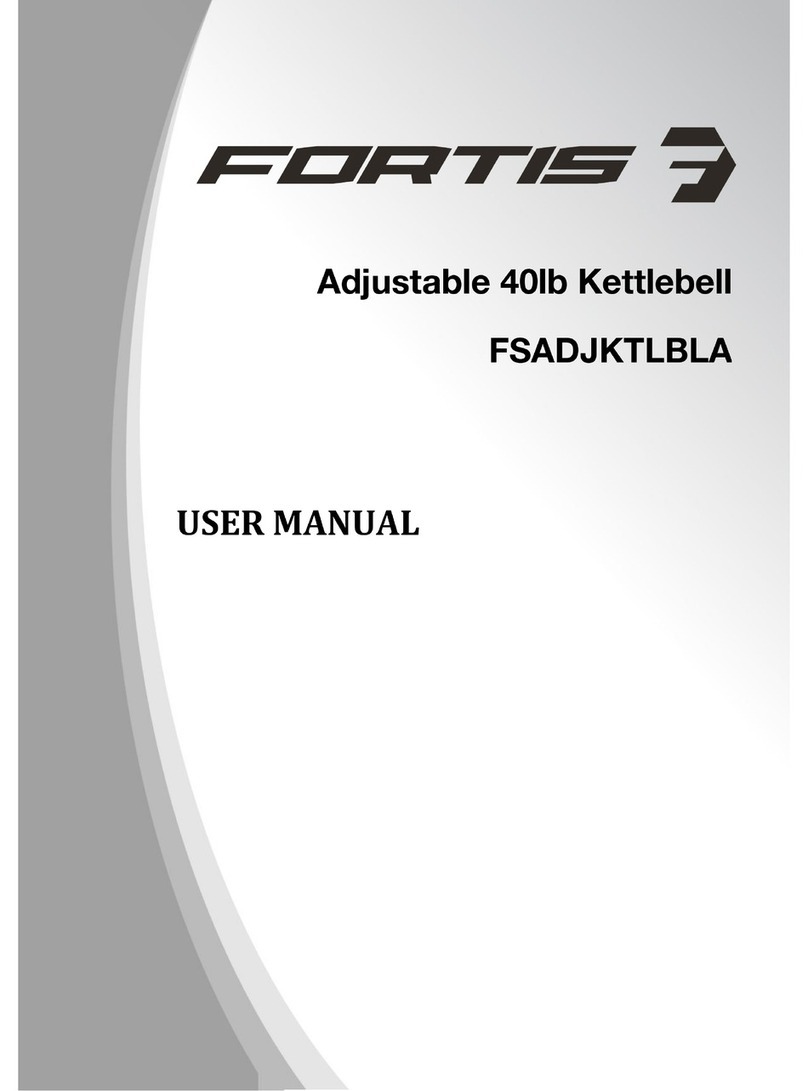
Fortis
Fortis FSADJKTLBLA User manual
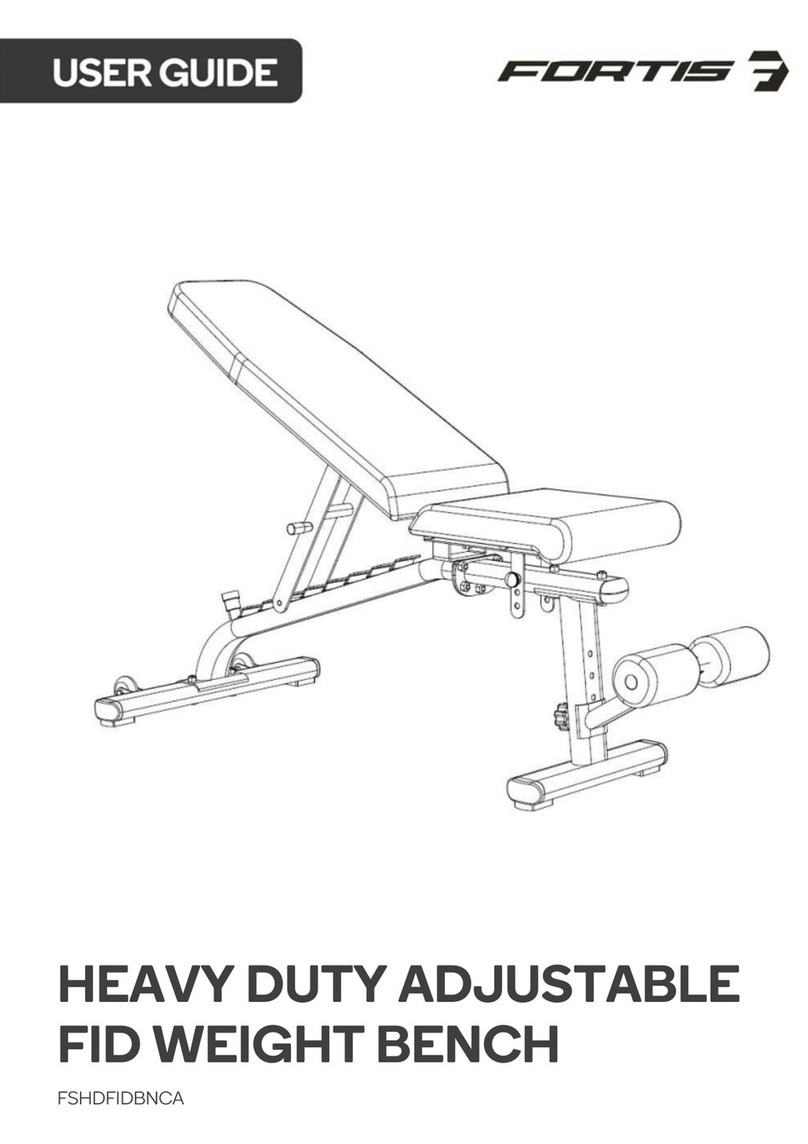
Fortis
Fortis FSHDFIDBNCA User manual
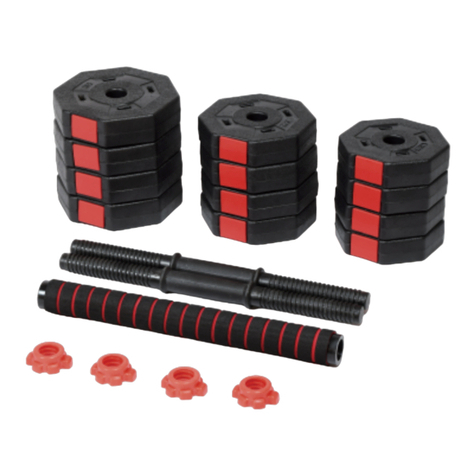
Fortis
Fortis FSADDBBS20A User manual
